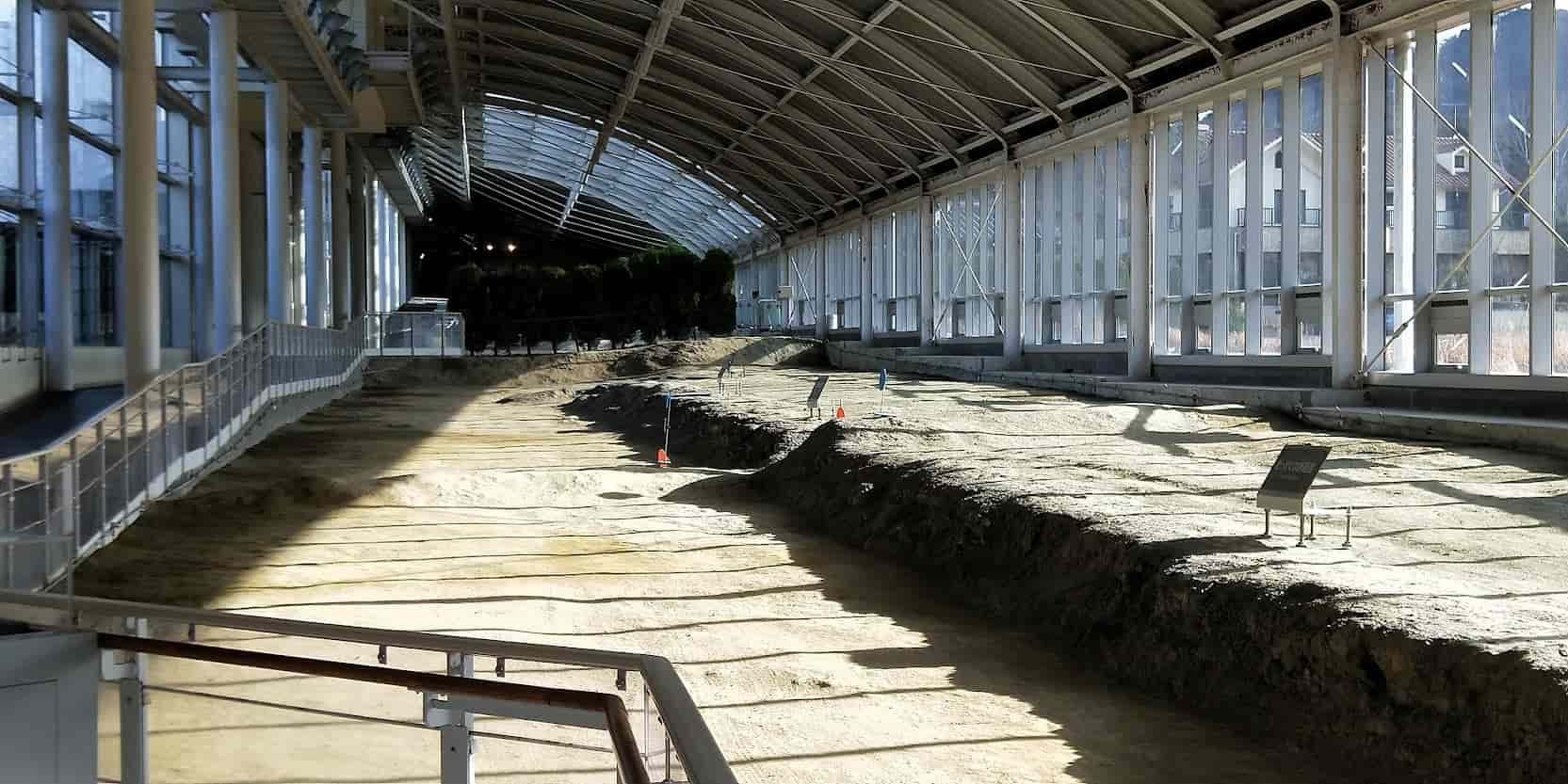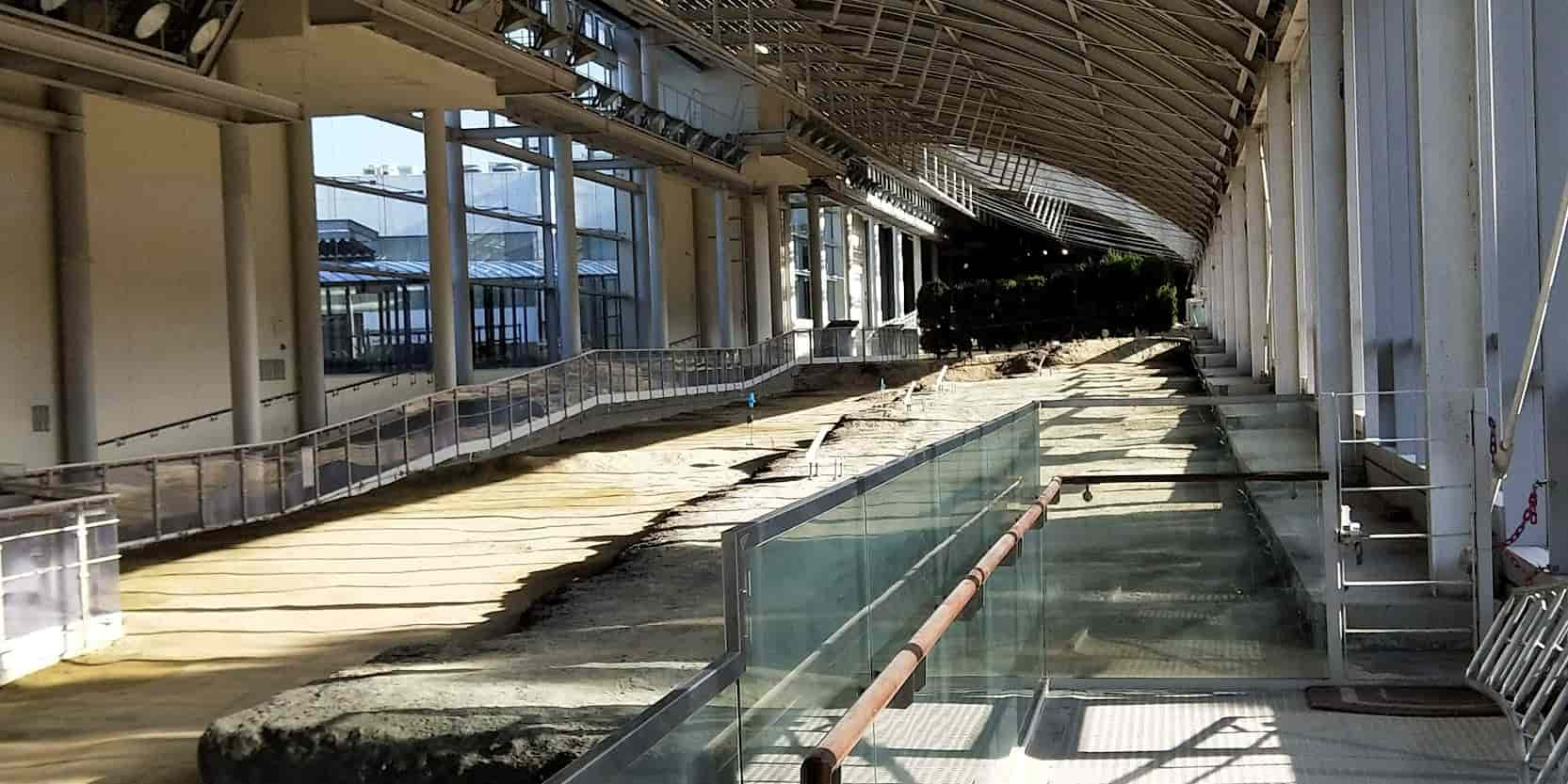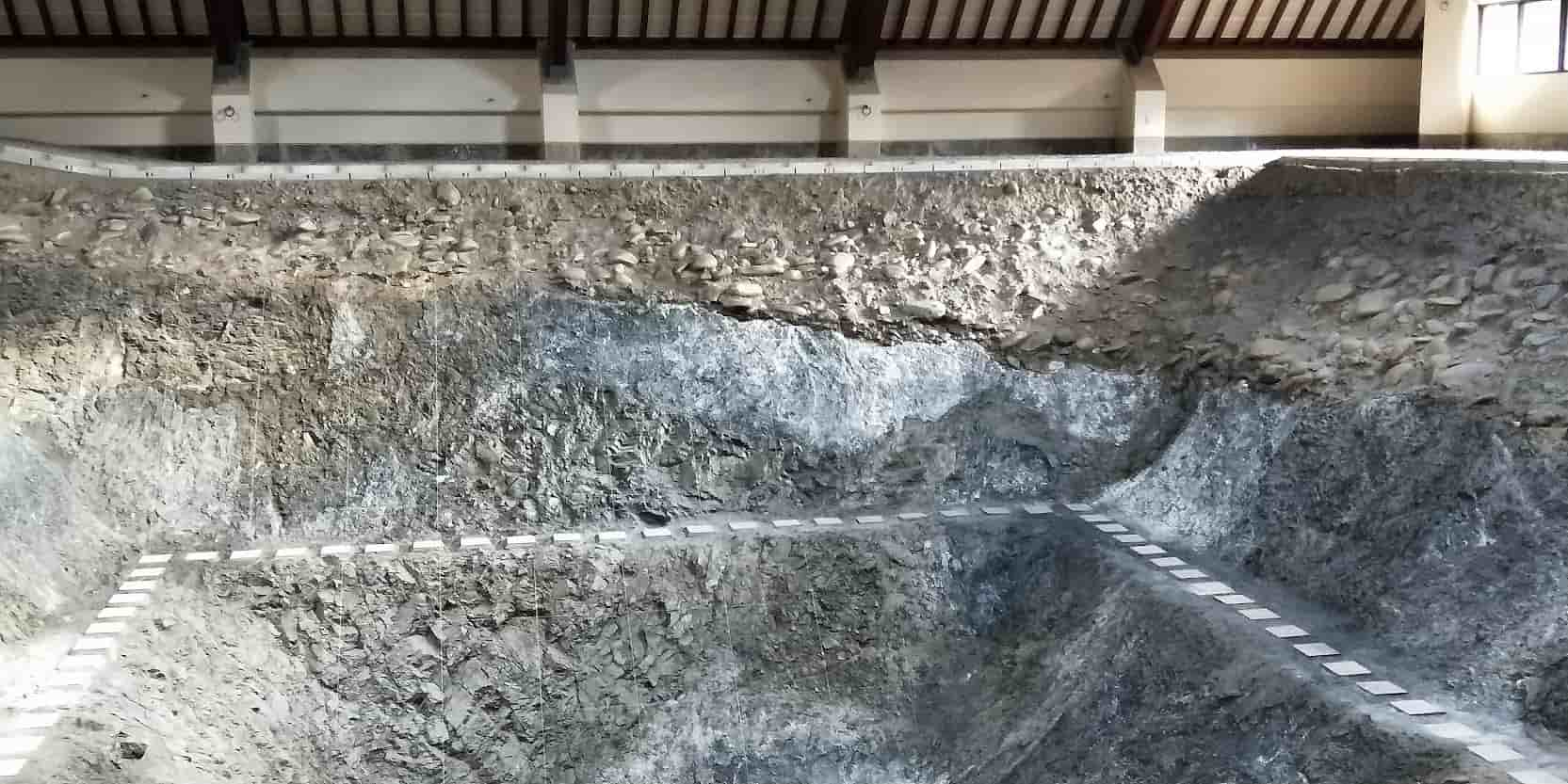國際保存案例
野島斷層保存館保存了 1995 年阪神淡路大地震的遺蹟。在淡路島北淡町出現長約 10 公里的地震斷層(野島斷層)。由於在地表上留下許多被切斷的遺跡,因此特別選定這段象徵多樣性地表特徵,長達 140 公尺長的破裂面,做為建館及保存的標的,更被地質學者譽為「構造地形的百科全書」。
The Nojima Fault Preservation Museum preserves the ruins of the 1995 Great Hanshin-Awaji Earthquake. A fault (Nojima Fault) of about 10 kilometers in length appeared in what was then known as Hokudan on Awaji Island. On the surface were many relics of that earthquake. A 140-meter fracture surface, symbolizing the diversity of surface features, was selected as the objective for construction of the museum and preservation. This has become known among geologists as “the encyclopedia of tectonic geomorphology.”
保存方面,約 3 公尺深的野島斷層槽溝及表面,利用透明的化學塗料保護,一來增加展品的強度,二來可讓展品的細部構造顯得更加明顯。而在展示呈現上,則是設置了許多標示供觀眾找到斷層的確切位置。為了增加觀看及體驗的震撼,在斷層槽溝底部特別裝設強化玻璃,讓觀眾可以站在斷層上看斷層。
In terms of preservation efforts, the three-meter-deep Nojima Fault trench and surface are protected with a transparent chemical coating, to strengthen it and highlight its detailed structures. In terms of exhibition, many signs have been added to enable visitors to find the exact location of the fault. To enhance the impressiveness of this site, tempered glass has been installed at the bottom of the fault trench, so that visitors can stand on the fault as they observe it.


為了紀念 1891 年濃尾地震 100 周年,日本政府在濃尾地震斷層帶上方興建根尾谷地震斷層觀察館,是日本最早的斷層保存博物館,也是世界上第一個展示及保存斷層槽溝的博物館。
To mark the 100th anniversary of the Mino-Owari Earthquake, which took place in 1891, the Japanese government built the Neodani Fault Museum in the Mino-Owari Earthquake fault zone. This is Japan’s first fault preservation museum and the first museum in the world to display and preserve a fault trench.

槽溝保存本就不易,更何況巨大的槽溝隱藏著崩坍的風險,所以槽溝是以兩階的倒金字塔形式建造,觀眾可以直接觀察 6 公尺深的斷層縱面,槽溝中原本設有可供行走的階梯與步道磚,但因 2002 年的一場大雨,造成槽溝淹水後,現今已築起 1 公尺高的擋水牆,並限制人員進入。
Preserving a very large fault trench is difficult and there are risks of collapse, some of which are hidden. Therefore, this trench was created in the shape of a two-step inverted pyramid, such that visitors can directly observe the six-meter-deep longitudinal section of the fault. In the trench, steps and paving tiles had been installed for access. However, after heavy rains in 2002 led to flooding of this trench, a one-meter-tall retaining wall was built and access was restricted.
